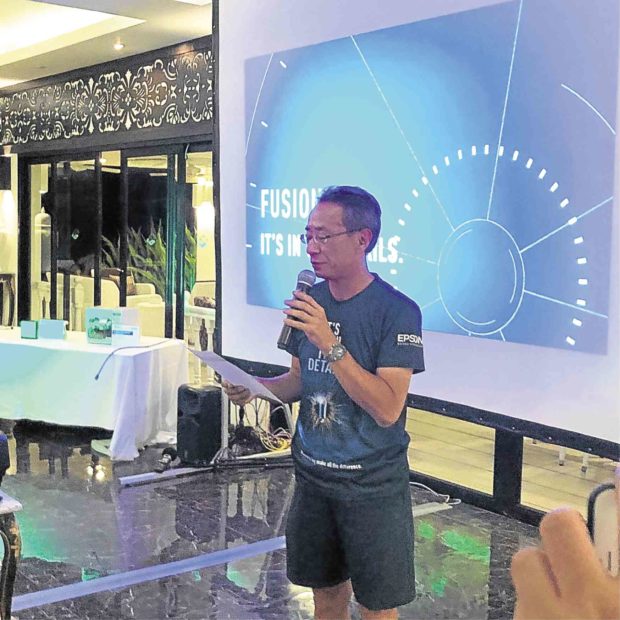Epson has entered the digital arena with the first crystal quartz wristwatch.
Never complacent with simply connecting people and time, Epson has always been an innovator, creating the world’s miniature printer in the late 1960s.
Today, four stalwart innovations has led Epson to rise higher in the tech world: Inkjet, visual communications, wearables and robotics.
All these have revolutionized how people connect with things and information, thus branding Epson among the Top 100 Global Innovators in 2017.
The Philippine market welcomed Epson in 1998. In the last five years, it has maintained a stable average revenue growth of 10 percent in Southeast Asia, where it has already gained market traction.
“Epson’s obsession to details runs through everything we do,” said Eduardo Bonoan, marketing director of Epson Philippines. “We believe that by taking care of the little details, we ensure to bring forth products developed solely from homegrown core technologies and devices.”
According to Bonoan, Epson Philippines’ vision is to replicate the success of its ink tank printers for small to medium enterprise segments in the larger business segment.
“Our high-speed multifunction inkjet printers will target the large enterprise segment competing, maybe, with the A3 laser copiers,” Bonoan said.
Epson’s global corporation also continuously provides a wide lineup of industrial and business solutions that bring precision technology closer to consumers.
Toshimitsu Tanaka, Southeast Asia managing director and Epson Philippines president, said precision technology “gave [them] the opportunity to expand a portfolio of innovative products, dedicated to making lives simpler and easier.”
Eduardo Bonoan talks about Epson Philippines’ stable market traction in the printing business. —photo by Christele Jao Amoyan
“Epson can provide a full spectrum of solutions that can meet the needs of business and industrial customers. We can produce through our research and development and our own manufacturing plants,” Bonoan said. “We work with our customers to input solution products to deliver savings and improvements to the organization.”
Epson Philippines follows a vertically integrated business model that allows them to hear customers’ voice for innovation and to gain flexibility in the sales support.
This strategy has led it to establish a presence in the rural scene.
Northern Negros Electric Cooperative (Noneco) found a partner in Epson Philippines with its mobile print-of-sale device. “When we tried the Epson TM-P80, we were pleased to see how it could contribute in increasing our productivity. What was most impressive was the long battery life. The units were able to run all day wherever we took it and its compact size made it easy for us to use it on-the-go,” said Jonathan B. Garrido, senior supervisor at Noneco.
In 2017, Epson has invested 5 percent of its annual revenue on research and development. This estimates to $1.4 million of daily allocation that allowed the brand to achieve the highest number of patent applications for inkjet printers, projectors, robotics and quartz devices in Japan and the United States.
Epson also offers direct-to-garment and dye sublimation printers, allowing customers to tailor-fit their textile needs. Its digital garment printing ensures unrivaled creative freedom for designers. The Epson SureColor F2130 and SureColor F9330 printers can run three days to two weeks of production. Electricity and water usage is also reduced by up to 50-75 percent, lowering users’ environmental footprint.
Epson’s technologies are also sustainable from cost to impact. Through the decades, Epson’s evolution has always been steered by the art and science of manufacturing known as the Japanese principle of “monozukuri.” This has allowed Epson to expand and evolve its philosophy both in the real world and cyberspace.
RELATED STORY
Honey, that machine just printed a shirt!
